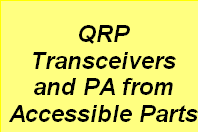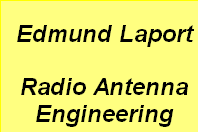


Antentop is FREE e-magazine devoted to Antennas and Amateur Radio an
Special page devoted to
RW3XA’s 9 Band HF Vertical Antenna

Custom Search
|
ANTENTOP- 01- 2005, # 007 |
RW3XA 9 Band HF Vertical Antenna |
||
|
|
|||
|
Recommendations. 2. Since capacitors are connected to "the hot ends" of the matching network, during transmition there can be rather significant voltages (up to 1KVpp at 100W). I used KVI (http://www.nd2x.net/Russ-caps/cap-en.htm ) doorknob capasitors (pulse type, reactive power is not normalized) 5-10KV. At such power, KVI are stable enough, but at rated voltage can be heated considerably and, accordingly, can make troubles... If power were greater than 100W I would recommend using K15-U (http://www.nd2x.net/Russ-caps/cap-en.htm ) capacitors of proper reactive power. |
|
||
|
|
|||
|
P.S.
|
and PSK, I don't mean CW, it's up to the operator,
where, when and how, but though uninitiated peoples would think
it is all up to computer. And those operators who care only for
his gears in the shack, even if it's the best piece of equipment,
"are well audible". I mean: I would prefer not hear
them at all. So let's improve both the equipment and the qualification
of the operator, in fact this harmony is the sense of HAMRADIO!
73! |
||
|
SWR Vs. Bands
|
|||
|
|
|||
|
Page 39 |
|||
 |
 |
 |
 |
Just for Fun:

Powered byIP2Location.com
Thanks for your time!
Last Updated:
February 22, 2020 20:26






